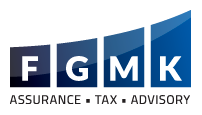Author: Matthew T. Fuller
Effective July 1, 2017, the Illinois individual income tax rate goes from 3.75% to 4.95% and the corporate income tax rate from 7.75% to 9.50% (inclusive of the replacement tax).
Because the tax rate increased in the middle of the tax year for calendar year taxpayers, it is likely that the state will again permit taxpayers to figure their tax based on the specific accounting method. Under the specific accounting method, a taxpayer can treat their income or loss and state modifications as though they were earned in two different taxable years. For an individual, the amount earned prior to July 1, 2017, is taxed at 3.75%. The amount earned on or after July 1, 2017, is taxed at 4.95%. The two tax amounts are then added together to get the total tax liability.
Please note that Illinois will likely accept a blended rate for the 2017 tax year. Taxpayers who have received uneven income streams in 2017, particularly a frontloaded income stream, should consider calculating the liability using the effective dates referenced above.
It is likely that the state will boost the "prior year" safe harbor rate for estimated tax purposes, but nothing is certain yet. The House just overrode the Governor's veto a short time ago, so details will follow. All that is known for certain at this point is that the tax rates increased effective July 1, 2017.









